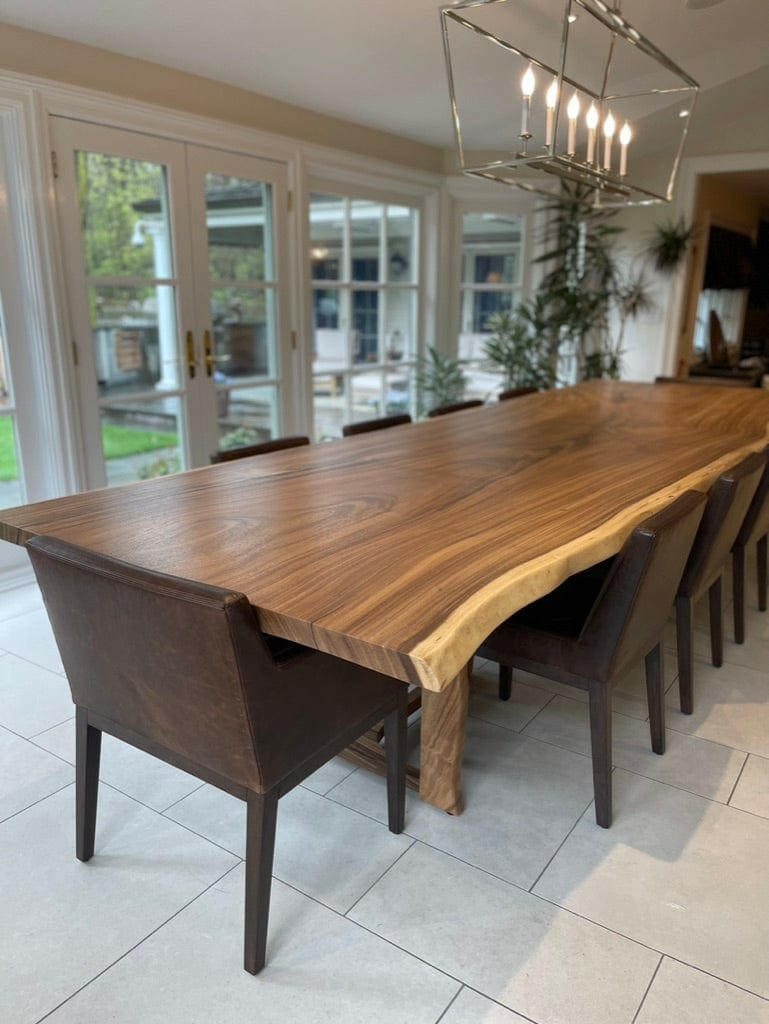A Detailed Appearance at Eating Table Leg Styles: Finding the Ideal Match
Picking the best eating table leg style is critical for both aesthetic allure and practical performance. For those with bigger tables, trestle legs ensure strong support, whereas hairpin legs present a mid-century modern vibe with their minimal design. The x-shaped legs mix contemporary style with improved security.
Typical Four Legs
Amongst the various types of dining table leg designs, the typical four-leg layout continues to be a classic choice for lots of houses. 4 legs supply balanced support, guaranteeing the table continues to be secure and qualified of bearing substantial weight (dining room table legs).
From a visual viewpoint, the standard four-leg layout can be conveniently adjusted to different interior designs. Whether crafted from wood, metal, or a combination of materials, these legs can be intricately sculpted, smooth and minimalistic, or anything in between. Their flexibility allows them to enhance both rustic and modern setups flawlessly.
Additionally, the straightforward framework of the four-leg style helps with simplicity of motion and placement within an area. Unlike more complex bases, this design reduces blockages, offering enough legroom for diners. In recap, the standard four-leg table leg design marries withstanding beauty with practical performance, making it an astute option for those looking for both kind and feature in their dining furnishings.
Pedestal Base
Commonly celebrated for its classy and space-efficient style, the stand base is a prominent choice to the conventional four-leg arrangement in dining table leg designs. This distinctive base normally features a single main column supporting the tabletop, which can differ in form, from ornately sculpted timber to sleek, contemporary steel. Among the primary benefits of the stand base is its ability to make the most of legroom and seating adaptability. Without corner legs, restaurants are paid for higher liberty of movement, making it a suitable choice for round and oval tables that promote even more intimate and comprehensive celebrations.
Additionally, the stand base's central assistance can take care of considerable weight, enabling for using larger table tops, such as marble or thick wood. This stamina combined with its aesthetic convenience makes the stand base a preferred selection in both typical and modern indoor setups. It can seamlessly integrate with numerous layout motifs, from timeless sophistication to minimalist modernity. The main column itself uses a canvas for complex styles and imaginative expressions, including an aspect of visual passion underneath the table. In summary, the pedestal base combines capability snappy, making it a refined and functional alternative for diverse eating atmospheres.
Trestle Legs
Trestle legs supply a durable and classic foundation for eating tables, characterized by their straight cross-bracing and durable assistance light beams. Stemming from medieval times, this style has progressed yet kept its essential structure, making it a perennial fave in both traditional and contemporary setups. The central trestle light beam, frequently supported by 2 or more upright posts, provides remarkable security, permitting for larger why not try these out table sizes without the demand for additional legs.
A substantial advantage of trestle leg tables is the adequate legroom they provide. Unlike tables with four corner legs, the lack of obstructions at the table's edges gives unimpeded area for chairs and diners, improving convenience and ease of access. This makes trestle tables suitable for accommodating larger gatherings, whether in an eating area or a banquet hall.
The aesthetic adaptability of trestle legs is significant. Readily available in a variety of materials such as timber, steel, and composite, they can be ended up to complement a large range of indoor styles. From rustic farmhouse to smooth modern-day layouts, trestle legs can be customized to suit individual tastes. Their enduring charm and practical advantages make trestle legs an engaging option for those looking for both design and usefulness in their table.
Barrette Legs

The charm of barrette legs hinges on their simpleness and convenience - dining room table legs. Offered in a variety of materials, including steel and brass, they can be ended up in countless colors to match various interior styles. Whether combined with a rustic wood table top or a contemporary glass surface, hairpin legs effortlessly blend capability with a touch of classic charm
Toughness is an additional notable feature of barrette legs. Regardless of their delicate appearance, these legs are engineered to bear considerable weight, making sure the dining look at this site table stays secure and safe and secure. Additionally, they are relatively easy to install, making them a preferred selection for do it yourself enthusiasts and professional furniture makers alike.
X-Shaped Legs

Constructed from products such as steel, timber, or a combination of both, X-shaped legs can be customized to match various design preferences. Steel legs frequently offer a smooth and commercial feeling, suitable for loft-style houses and modern-day eating areas. On the Homepage other hand, wood X-shaped legs provide a warmer, much more rustic allure, suitable for farmhouse or diverse interiors. The flexibility in products permits property owners to tailor their table to better fit their general layout system.
In addition, the engineering behind X-shaped legs ensures even weight distribution, lessening the risk of wobbling and improving toughness. This makes them specifically fit for bigger table that require additional support. Basically, X-shaped legs mix sensible design with modern-day visual appeals, making them an ageless option for diverse dining environments.
Verdict
An extensive understanding of dining table leg styles reveals the distinctive attributes and benefits of each layout. Trestle legs make sure robust support for bigger tables, and barrette legs introduce a mid-century contemporary visual.
Comments on “Exploring Various Layouts for Dining Room Table Legs to Suit Your Visual”